News you can use
Posted on | April 10, 2012 | 2 Comments
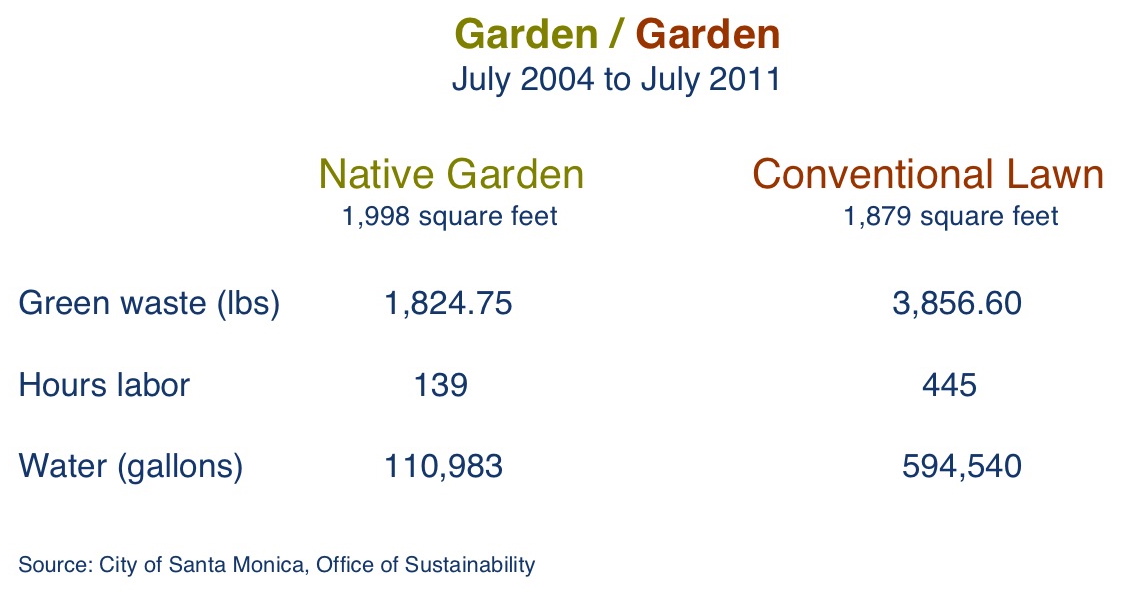 If it’s pictures of lovely native plants you’re after, go to the website of the Theodore Payne Foundation, which last weekend hosted a garden tour across greater Los Angeles. However, here and now, the story is about numbers. The City of Santa Monica has updated figures comparing the water consumption, labor requirements and green waste production of two side-by-side test gardens, one stocked with native plants and irrigated by drip and the other planted with a conventional complement of lawn and shrubs and watered with sprinklers. According to the project’s landscape designer Susanne Jett, since the two gardens were planted in 2004, the native one has used 81 percent less water, required 71 percent fewer hours of labor and produced 38 percent less green waste. Extrapolate those results across LA County’s roughly 1.6 million privately owned homes and it’s clear that one of the single most effective things that homeowners worried about the state of the environment can do is not necessarily kill their entire lawn but just the front yard grass that most of them don’t use anyway. Click here to keep reading
If it’s pictures of lovely native plants you’re after, go to the website of the Theodore Payne Foundation, which last weekend hosted a garden tour across greater Los Angeles. However, here and now, the story is about numbers. The City of Santa Monica has updated figures comparing the water consumption, labor requirements and green waste production of two side-by-side test gardens, one stocked with native plants and irrigated by drip and the other planted with a conventional complement of lawn and shrubs and watered with sprinklers. According to the project’s landscape designer Susanne Jett, since the two gardens were planted in 2004, the native one has used 81 percent less water, required 71 percent fewer hours of labor and produced 38 percent less green waste. Extrapolate those results across LA County’s roughly 1.6 million privately owned homes and it’s clear that one of the single most effective things that homeowners worried about the state of the environment can do is not necessarily kill their entire lawn but just the front yard grass that most of them don’t use anyway. Click here to keep reading
Plus ça change, plus c’est la même chose
Posted on | April 6, 2012 | 6 Comments
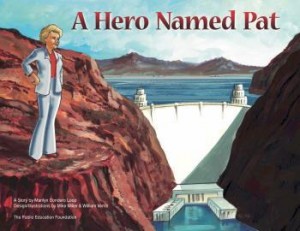
A new report from the NRDC is reminiscent of a Soviet-style Southern Nevada children's book praising Las Vegas water manager Pat Mulroy.
Publication this week of “Ready or Not: An Evaluation of State Climate and Water Preparedness Planning” by the Natural Resources Defense Council offers a good example of what happens when lobbyists are charged with assessing the very policy that they had a hand in developing. Las Vegas water manager Pat Mulroy becomes a climate hero and California becomes a nationwide leader in climate-ready water policy, a ranking prominently reported today in the San Francisco Chronicle.
Lest anyone mistake skepticism about the NRDC report as an endorsement of climate change denial, let it be said up front: Climate change is fact. What prompts this post isn’t any difference of opinion with the NRDC about the utter urgency of climate change preparedness, or even any over-arching disagreements about the need for high-level water planning to actually trickle down into active policy. It’s incredulity at the rankings. If a state that turned Owens Lake into a salt bed, that led the West in destroying the Colorado River estuary and is well on its way to finishing off the Sacramento-San Joaquin Bay Delta gets a top ranking for water management in the face of climate change, it must be asked: What merits a fail?
High good, low bad: Mead in March 2012
Posted on | April 3, 2012 | 1 Comment
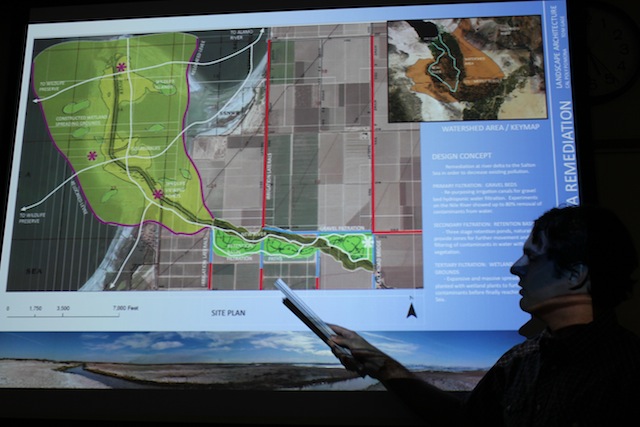
The steady rise of Lake Mead, clearinghouse of Colorado River water for the Southwestern US and Mexico, was heartening while it lasted. From a November 2010 low only seven feet shy of triggering shortage declarations, a steady flow into the biggest reservoir in the US throughout 2011 pushed Mead’s elevation 58 feet above the austerity line.
However, in March 2012, the level began to fall again. Look at year-on-year figures from the federal Bureau of Reclamation and it is clear that since 2000 the overwhelming trend has been downward. The entire river system, including Mead, is only 63% of what Reclamation classifies as full.
If there is good news to be had in decline, and there is, part of it is that an innovative landscape architecture instructor at Cal Poly Pomona is tweaking the founding Reclamation mission to “make the desert bloom.” Charged with leading a sustainability studio this winter, teacher Jessica Hall asked master’s degree candidates to “make the river the client.” Click here to keep reading
Tags: chance of rain > Jessica Hall > LA Creek Freak > US Bureau of Reclamation
Pacific coast irises: Look now, buy later
Posted on | April 1, 2012 | 5 Comments
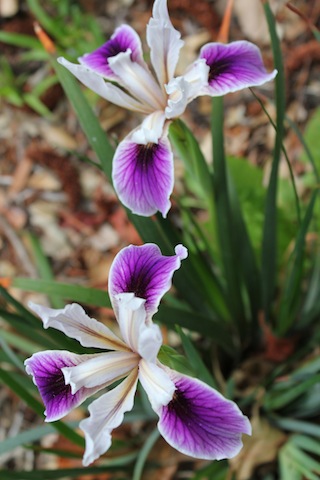
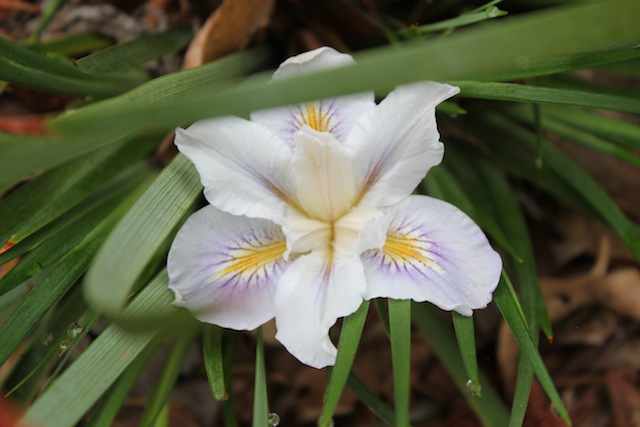
 Last spring I wrote about how the March release by nurseries of Pacific coast irises tempted many — myself included — to plant the flowers in April. I put up this post-script because, having done it in 2011 after a wet winter leading into what proved a cool summer, I still saw mortality rates of 15%. Anyone trying it this April would be starting after a dry winter going into what looks like it’s going to be a hot summer. Here’s the problem: If you are watering newly planted irises as they become dormant in May and June, and given the only partially charged soil, you probably will be, it’s a perfect recipe for root rot and death. At $5 a plant, or more, there are much less dispiriting ways to waste money. So in these dewy days following our long-awaited rain, my advice is to inspect established Pacific coast irises in good native gardens, note which you like, even take pictures. Then take your shopping list to a good nursery (a Pacifica hotspot being Matilija Nursery in Moorpark) next autumn, and then plant irises when they have a long cool period to become established. These are shots of this year’s survivors from a selection of plants purchased from Matilija and the Theodore Payne Foundation in Sun Valley.
Last spring I wrote about how the March release by nurseries of Pacific coast irises tempted many — myself included — to plant the flowers in April. I put up this post-script because, having done it in 2011 after a wet winter leading into what proved a cool summer, I still saw mortality rates of 15%. Anyone trying it this April would be starting after a dry winter going into what looks like it’s going to be a hot summer. Here’s the problem: If you are watering newly planted irises as they become dormant in May and June, and given the only partially charged soil, you probably will be, it’s a perfect recipe for root rot and death. At $5 a plant, or more, there are much less dispiriting ways to waste money. So in these dewy days following our long-awaited rain, my advice is to inspect established Pacific coast irises in good native gardens, note which you like, even take pictures. Then take your shopping list to a good nursery (a Pacifica hotspot being Matilija Nursery in Moorpark) next autumn, and then plant irises when they have a long cool period to become established. These are shots of this year’s survivors from a selection of plants purchased from Matilija and the Theodore Payne Foundation in Sun Valley.
Aroused by rain
Posted on | March 27, 2012 | 4 Comments
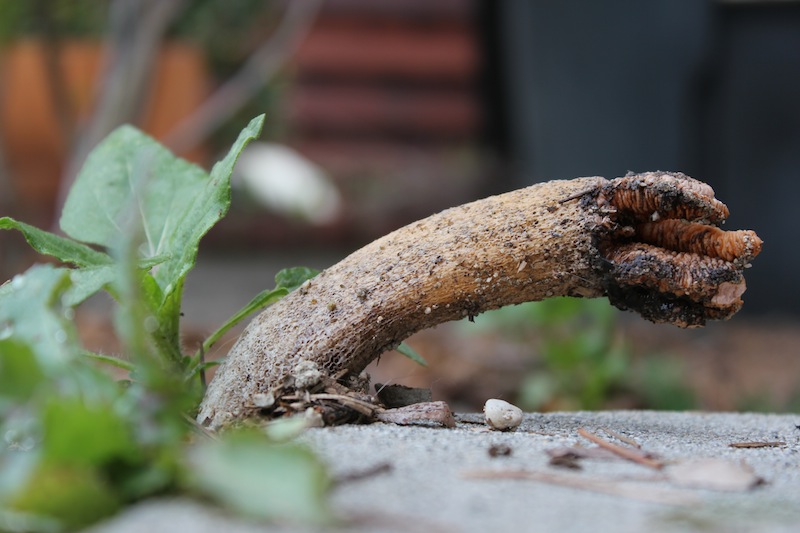
The appearance of this mushroom after a much-needed rain in the Los Angeles foothills demanded that I Find The Camera. In the interim between putting the photo on Facebook this morning with a request for an ID and getting a response to an e-mailed query from Los Angeles County Natural History Museum mycologist Florence Nishida this evening, speculation as to its genus involved unbridled merriment. Southern California resident treasure, memoirist Erika Schickel, ventured that it was a Micropenisula shlongaeria. My own suspicion had been a Phallus anthonyweinerii. After more ribald speculation and some genuine mycological story-telling on the social network, Nishida’s response by e-mail in early evening had a “eureka” quality.
You are a lucky girl,” she wrote, “nature has gifted you with a stinkhorn, aka phalloid fungus. It’s probably Lysurus borealis, though another species is very common in southern California, Lysurus mokusin. Just looking at your photo, that’s my guess. L. borealis has arms meeting at the tips, but not fused, and the arms are pale flesh color; the gleba (spore mass) is brownish green. L. mokusin however, has a bright pink stalk, arms nearly blood red, tips are fused to form a tapering spire, and the gleba is in the spaces between the arms, light to dark brown.”
A gift indeed, not to mention two inches of garden irrigation. Free. From the sky. For more on what mushrooms might be appearing in your garden after this weekend’s rains, do read this account of a 2010 tour of my former central LA garden with Nishida on the amazing, ephemeral fungi that are aroused, all too briefly, by our all too rare rains.
Tags: chance of rain > Florence Nishida > gardening > Los Angeles > stinkhorn mushrooms


